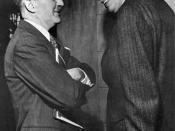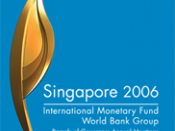The International Monetary Fund
The original policies and goals created in 1944 by the International Monetary Fund (IMF) differ little from the main focus of the organization at present. The IMF was created to rebuild and stabilize the world economy after World War II. And to this day it continues in its efforts to support and stabilize the economies of its member nations.
Initially the IMF was created to help ward off what was thought to be an imminent post war depression. It was founded at the United Nations Monetary and Financial Conference in Bretton Woods, New Hampshire in July of 1944. The conference focused on several conditions which member nations would have to comply with. Each would agree to set a par value for its currency. This meant a fixed value would be given to each member's unit of currency to halt great fluctuations in their prices in relation to each other.
An agreement was also made to apply the principle of convertible currencies. Each nation could now freely trade currencies with assurances that it could be bought and sold at a standard, set value. Member nations were also obliged to contribute to the running costs of the International Monetary Fund. The payments would be based on a certain countries' national income, international trade and international reserve holdings. Countries with larger subscriptions would be allowed more power within the organization through more eligible votes. The IMF was created as an attempt to make trade easier and more accessible, stabilizing economies after the 2nd World War.
The Articles of Agreement, to create the IMF, were signed by 29 countries on December 27, 1945. The head office was to be placed in Washington D.C. It would begin financial operations on March 1, 1947. Since then, 153 more countries have joined the...


